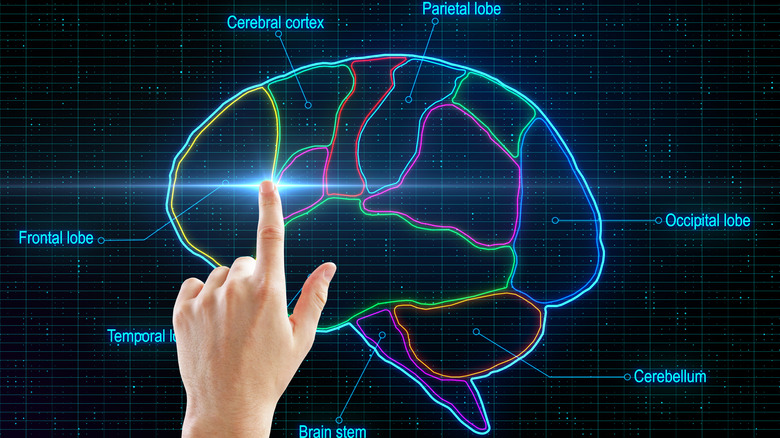What Happens To Your Brain When You Daydream?
Dreaming isn't exclusive to nighttime. If you've ever been pulled back into the present moment by a friend calling, "Yoo-hoo, did you hear me?" then you've probably experienced daydreaming. While often associated with happy memories or visualizations of the future, for some, daydreaming can intrude on one's ability to function. While not formally recognized as a mental health disorder, a 2018 study published in Frontiers in Psychiatry found that 77 participants self-diagnosed with maladaptive daydreaming engaged in an average of four hours of daily daydreaming.
But daydreaming can also have a number of mental health benefits. Verywell Mind reports that when our minds wander, our brain enters the alpha wave zone — characterized by a state of open awareness but not overstimulation (via Healthline) — which, in turn, induces feelings of calm and lessens anxiety. Additionally, when focusing a daydream around a desired goal, Verywell Mind says, "This method pre-wires [the] brain for success." If you're an athlete, for example, you may find that daydreaming before a big match primes you for a win. Let's take a deeper look at what goes on in different brain regions when we're in the midst of a daydream.
Brain activity increases in some regions and decreases in others
According to Verwell Mind, daydreaming is our brain's way of problem-solving. By allowing our thoughts to drift freely, our mind is better able to mull over a problem to arrive at a solution, rather than intensifying our concentration on the issue. A 2009 study conducted by the University of British Columbia found this to be true when researchers used brain imaging technology to determine that brain regions responsible for highly complex problem-solving, which were previously thought to be at rest while daydreaming, actually become activated. These brain regions include the lateral prefrontal cortex and the dorsal anterior cingulate cortex. Lead author of the study, Professor Kalina Christoff, stated, " .. this study shows our brains are very active when we daydream — much more active than when we focus on routine tasks."
Other research has found that daydreaming may decrease brain activity. A 2021 study conducted by UC Berkeley researchers determined that humans experience a decrease in brain activity in the parietal cortex when our mind drifts from the present moment. Specifically, our P3 brain signals, which are responsible for expectation, weaken. When engaged in a repetitive task, these brain signals are activated to interpret the incoming information and determine the expected outcome, according to 1988 research published in Behavioral and Brain Sciences. When we shift our attention away from that present task and become engrossed in a daydream, however, these brain signals are less active.


